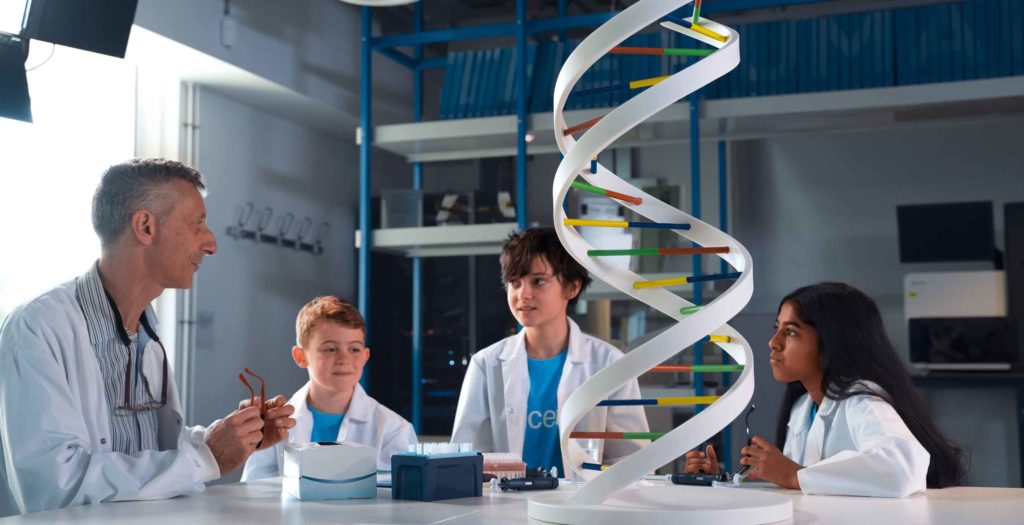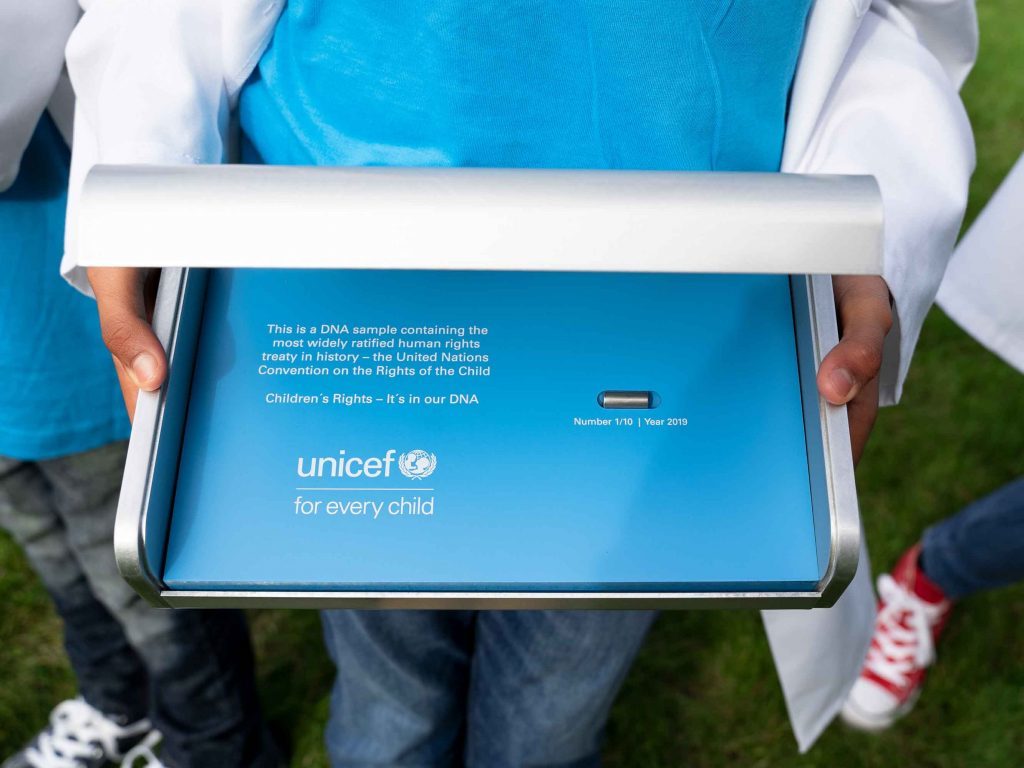
To celebrate the 30-year anniversary of the United Nations Convention on the Rights of the Child, UNICEF has found a way to ensure that this important document is stored for the foreseeable future.
The UN Convention on the Rights of the Child (CRC) was unanimously adopted by the General Assembly of the United Nations on November 20th, 1989. In 2019, the document has been stored in synthetic DNA. The capsule containing the DNA will be kept in one of the safest places in the world, in the permafrost at the Arctic World Archive in Svalbard, Norway.
“The Convention on the Rights of the Child is one of the world’s most important documents. It protects our children and their rights and will now be a part of our organisational DNA. The Children’s Rights Convention is the first document to be stored officially in DNA,” says UNICEF Norway’s Executive Director Camilla Viken.
Why DNA storage?
Most documents, photos, videos and other data are stored digitally, including the CRC. The problem with digital storage is that the technology quickly becomes outdated; floppy disks, CDs and even USB-sticks are examples of this.
Today, we store most of our digital data in “the cloud”. Despite the name, this means that we rely on physical hard drives vulnerable to power outages, hacking, war and natural disasters. Scientists have developed several methods that make it possible to store information in nature’s oldest storing device: DNA. DNA is a molecule which carries genetic information in all living creatures, and therefore works as nature’s own hard drive. In this case, synthetic DNA has been used to store digital information.
“Today it can actually be easier to retrieve information from prehistoric remains than from an old mobile phone. Storing digital data in synthetic DNA is like coding on ordinary computers; it’s just another language. It’s a bit like translating from one language to another,” says Nick Goldman, Senior Scientist at EMBL’s European Bioinformatics Institute (EMBL-EBI) in Cambridge, UK.
Goldman is one of the scientists who first developed methods for storing large amounts of data in DNA and is responsible for encoding the Convention into a DNA-based format. The encoded document has then been synthesized and sequenced by Twist Bioscience (Nasdaq: TWST) in San Francisco.

“This project is an illustrative example of the way we are able to bring together innovative technologies based on biology to protect and benefit children worldwide and we are honored to be a part of this effort,” says Emily M. Leproust, CEO and Co-Founder of Twist Bioscience, and co-author of one of the first publications on DNA data storage.
The finished synthetic DNA has then been put into small pill-shaped stainless-steel capsules by Imagene SA in Pessac, France: “We are honored to contribute to this project with our unique preservation technology, enabling the Convention on the Rights of the Child to remain recoverable and readable for centuries and even millennia to come,” says Sophie Tuffet, CEO and Co-Founder of Imagene SA, and co-author of one of the first publications on long term room temperature DNA storage.
World Children’s Day 2019
The Convention on the Rights of the Child is being stored in DNA by UNICEF to accentuate its importance and ensure that its content is available for generations to come: “There are children all over the world who are in need of the protection this document provides. We encourage everyone to become familiar with the convention, both today and in the future,” says Viken.
On World Children’s Day, November 20th, the Convention on the Rights of the Child will be brought to Svalbard, Norway, for safe keeping.

How to Store Digital Data in DNA
To encode the document into archival storage copies in DNA, first, the digital files were converted from the binary code using 0s and 1s of digital data into sequences of A, C, T and G by EMBL-EBI. Twist Bioscience then synthesized the DNA in short segments in the sequence order provided. The short DNA segments each contain about 20 bytes of data as well as a sequence number to indicate their place within the overall sequence.
This is the process of storage. To ensure that the file is stored accurately, Twist reads the sequence back to ensure 100 percent accuracy. Finally, to store the document for the future, Imagene SA placed copies of the document encoded in DNA into DNAshells, small stainless-steel capsules, laser sealed under inert atmosphere, for up to thousands of years preservation at room temperature.
This post was originally published on the UNICEF website.
